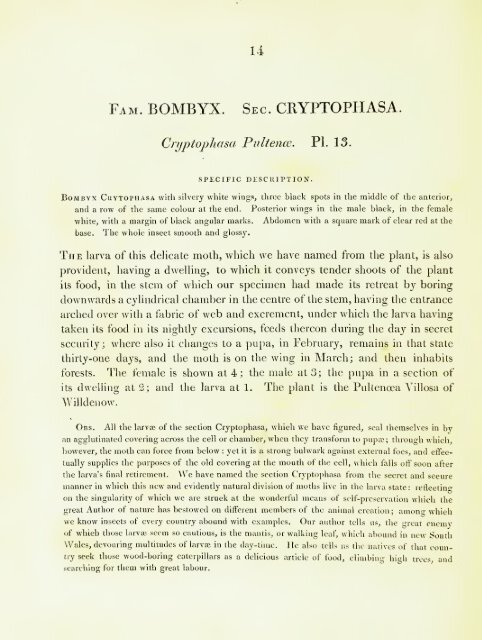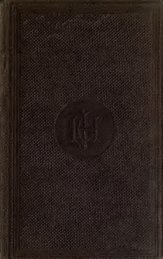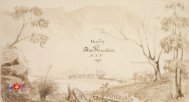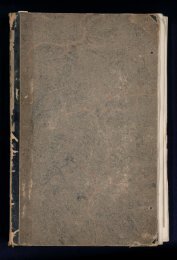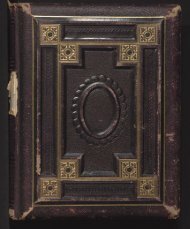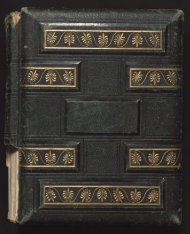A Natural History of Lepidopterous of NSW by John William Lewin
A Natural History of Lepidopterous of NSW by John William Lewin COLLECTED, ENGRAVED, AND FAITHFULLY PAINTED AFTER NATURE JOHN WILLIAM LEWIN, A.L.S. LATE OF PARAMATTA, NEW SOUTH WALES
A Natural History of Lepidopterous of NSW by John William Lewin
COLLECTED, ENGRAVED, AND FAITHFULLY PAINTED AFTER NATURE
JOHN WILLIAM LEWIN, A.L.S. LATE OF PARAMATTA, NEW SOUTH WALES
Create successful ePaper yourself
Turn your PDF publications into a flip-book with our unique Google optimized e-Paper software.
14<br />
Fam. BOMBYX.<br />
Sec. CRYPTOPHASA.<br />
Cryptophasa Pultence. PI. 13.<br />
SPECIFIC DESCRIPTION.<br />
Bom<strong>by</strong>x Ciiytophasa with silvery white wings, three black spots in the middle <strong>of</strong> the anterior,<br />
and a row <strong>of</strong> the same colour at the end. Posterior wings in the male black, in the female<br />
white, with a margin <strong>of</strong> black angular marks. Abdomen with a square mark <strong>of</strong> clear red at the<br />
base. The whole insect smooth and glossy.<br />
The larva <strong>of</strong> this delicate moth, which we have named from the plant, is<br />
provident, having a dwelling, to which it conveys tender shoots <strong>of</strong> the plant<br />
its food, in the stem <strong>of</strong> which our specimen had made its retreat <strong>by</strong> boring<br />
downwards a cylindrical chamber in the centre <strong>of</strong> the stem, having the entrance<br />
arched over with a fabric <strong>of</strong> web and excrement, under which the larva having<br />
taken its food in its nightly excursions, feeds thereon during the day in secret<br />
security; where also it changes to a pupa, in February, remains in that state<br />
thirty-one days, and the moth is on the wing in March; and then inhabits<br />
forests. The female is shown at 4; the male at 3; the pupa in a section <strong>of</strong><br />
its dwelling at 2; and the larva at 1. The plant is the Pultencea Yillosa <strong>of</strong><br />
Willdenow.<br />
also<br />
Obs. All the larvae <strong>of</strong> the section Cryptophasa, which we have figured, seal themselves in <strong>by</strong><br />
an agglutinated covering across the cell or chamber, when they transform to pupae; through which,<br />
however, the moth can force from below : yet it is a strong bulwark against external foes, and effectually<br />
supplies the purposes <strong>of</strong> the old covering at the mouth <strong>of</strong> the cell, which falls <strong>of</strong>f soon after<br />
the larva's final retirement. We have named the section Cryptophasa from the secret and secure<br />
manner in which this new and evidently natural division <strong>of</strong> moths live in the larva state: reflecting<br />
on the singularity <strong>of</strong> which we are struck at the wonderful means <strong>of</strong> self-preservation which the<br />
great Author <strong>of</strong> nature has bestowed on different members <strong>of</strong> the animal creation; among which<br />
we know insects <strong>of</strong> every country abound with examples. Our author tells us, the great enemy<br />
<strong>of</strong> which those larvae seem so cautious, is the mantis, or walking leaf, which abound in new South<br />
Wales, devouring multitudes <strong>of</strong> larva; in the day-time. He also tells us the natives <strong>of</strong> that country<br />
seek those wood-boring caterpillars as a delicious article <strong>of</strong> food, climbing high trees, and<br />
searching for them with great labour.


